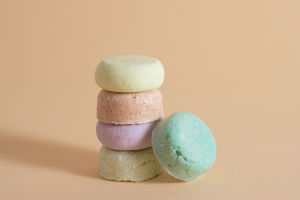Ceramic bowls, though seemingly simple, embody a rich tapestry of historical and cultural significance.
Their journey from ancient times to the present showcases their evolution from basic utilitarian objects to sophisticated works of art.
Ceramic bowls have origins that date back thousands of years. In China, the Neolithic Age saw the advent of primitive pottery, with ceramic bowls emerging as a prominent form.
Over time, these bowls evolved into increasingly intricate works of art, thanks to advancements in technology. During the Tang and Song dynasties, Chinese ceramic craftsmanship reached unparalleled heights, with blue and white porcelain and white porcelain becoming iconic representations of this era.
In the West, ceramic bowls from ancient Greece and Rome also boast a long and storied history. The opening of the Silk Road facilitated the exchange of ceramic art between East Asia and Europe, profoundly influencing Western ceramic techniques.
The production of ceramic bowls involves a meticulous and intricate process. It begins with material selection, where high-quality clay serves as the foundation for the bowls. The clay’s characteristics directly impact the quality of the final product. The next step is molding.
Traditional methods of bowl making include hand-throwing and mold molding. Hand-throwing involves shaping the clay into a bowl by hand, whereas mold molding utilizes pre-made molds. After shaping, the bowls are dried and subjected to an initial firing.
The drying process must occur in a well-ventilated environment to prevent cracking. The first firing, known as bisque firing, removes moisture and hardens the clay. This is followed by glazing and a secondary firing.
Glazing imparts color and gloss to the surface of the bowl while enhancing its durability. The secondary firing, conducted at high temperatures, melts the glaze and bonds it with the ceramic base, resulting in a solid, finished glaze.
Ceramic bowls are cherished not only for their practicality but also for their distinctive properties. They exhibit excellent thermal stability, effectively maintaining the temperature of food whether hot or cold.
The smooth surface of ceramic bowls resists absorbing food odors and colors, making them easier to clean. Moreover, the non-metallic, harmless nature of ceramic materials renders them a healthy and environmentally friendly choice, ideal for modern living.
The aesthetic appeal of ceramic bowls is another significant feature. From China's blue and white porcelain to Japan's traditional ceramics and Europe's finely painted pottery, these diverse styles reflect the artistic sensibilities and cultural traditions of their respective regions.
The intricate patterns and unique forms of ceramic bowls not only enhance the visual appeal of the dining table but also showcase the artistic heritage of different cultures.
In contemporary life, ceramic bowls have transcended their role as mere household items. They are now commonly found in restaurants, hotels, and other dining establishments. Their classic appearance and superior quality make them a preferred choice for high-end dining experiences.
Many upscale restaurants opt for customized ceramic bowls to elevate the dining experience and leave a lasting impression on patrons.
Simultaneously, the use of ceramic bowls in homes is on the rise. With increasing awareness of health and environmental concerns, ceramic bowls are favored for their natural, non-toxic properties.
In kitchens, they not only enhance the aesthetic appeal of table settings but also contribute to healthier eating habits. Additionally, ceramic bowls are often given as gifts, symbolizing good wishes and care.
As a traditional and enduring form of tableware, ceramic bowls have cemented their place as essential companions in our daily lives.
Their exquisite craftsmanship, exceptional performance, and rich artistic heritage ensure that their allure remains undiminished over time. The charm of ceramic bowls continues to shine brightly, promising to captivate and enrich our lives for generations to come.


